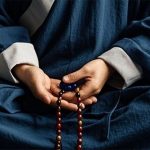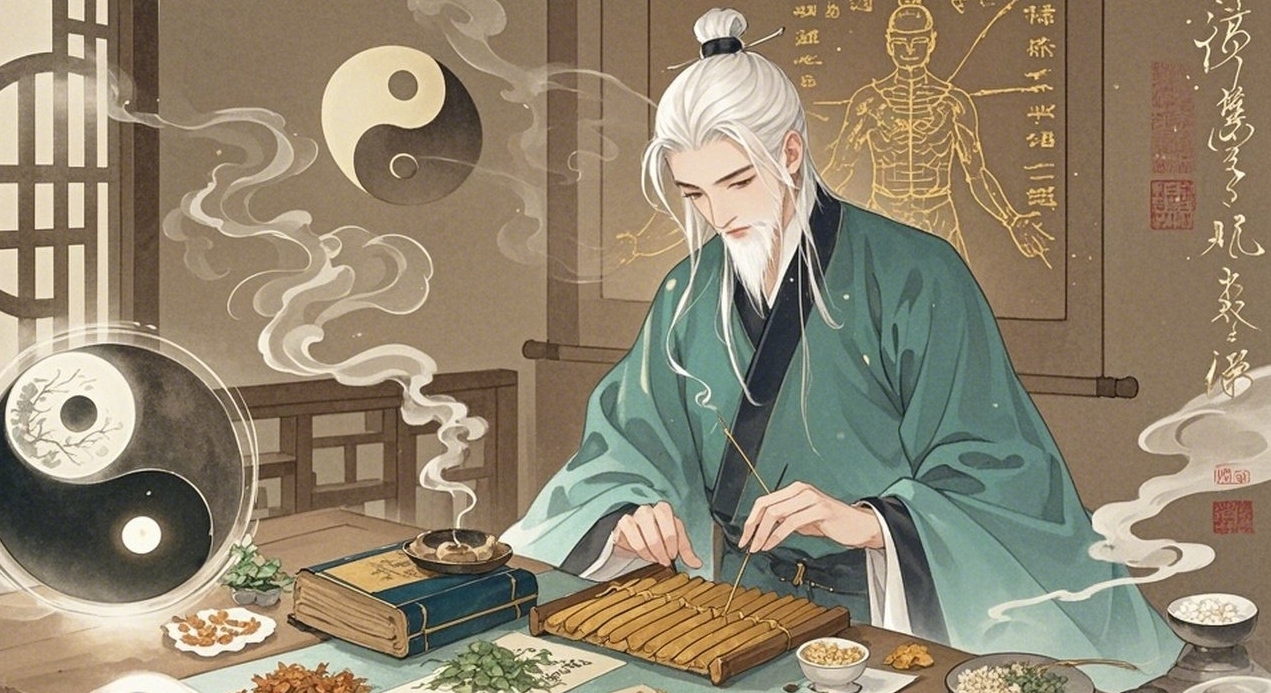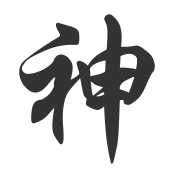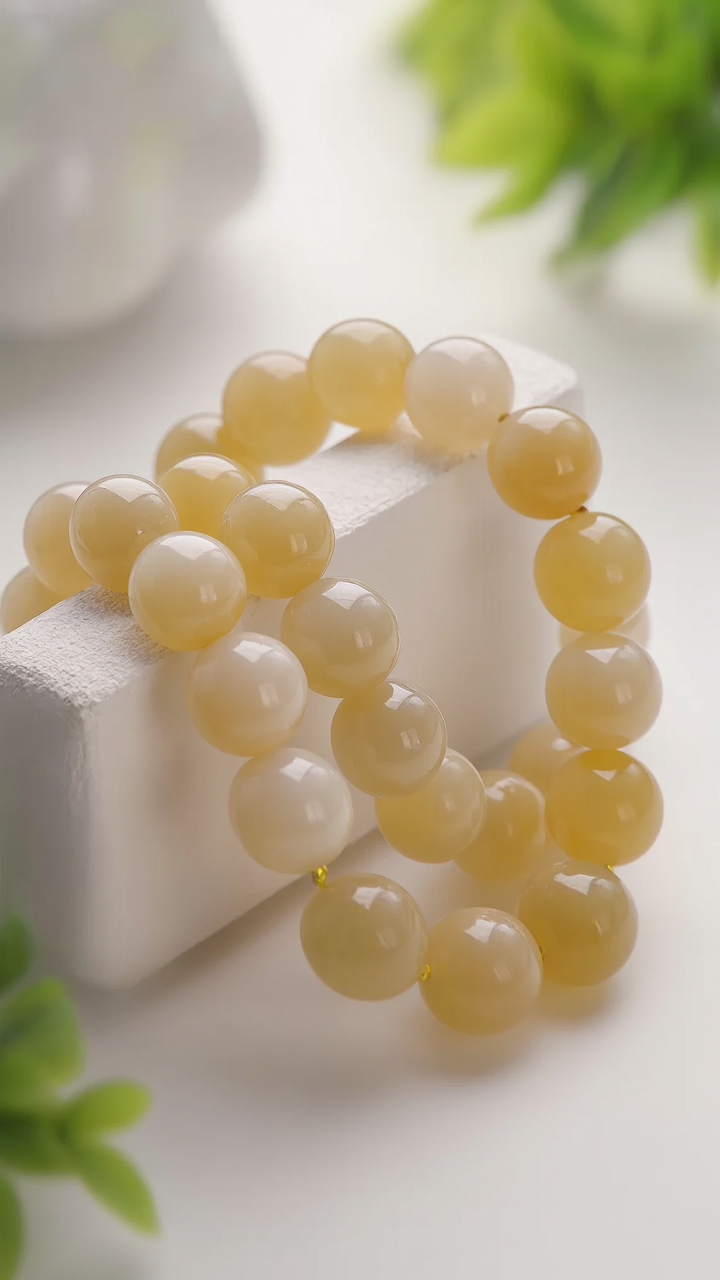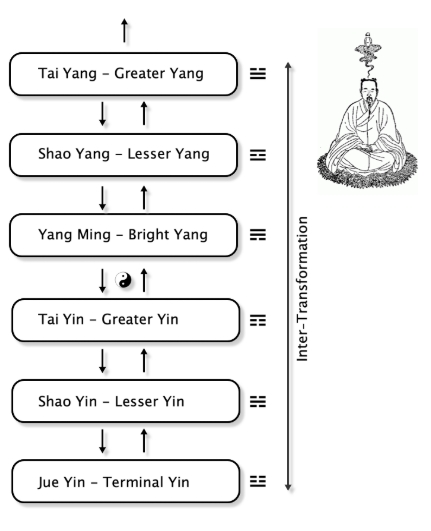
The Human Body in Daoist Thought
In Daoist philosophy, the concept of the "body" extends far beyond the purely physical form as it is commonly understood in the West. Instead, the human body is seen as a complex, multi-layered system—a series of interwoven "sheaths" that serve as conduits anchoring the spirit (Shén, 神) into the material realm. These layers include the physical, energetic, mental, spiritual, causal, and others, each reflecting and influencing the state of the others. Their collective harmony determines the tangible experience of health and well-being within the physiological form. It is within this dynamic interplay of layers that the principles of Chinese medicine and Daoist internal cultivation are applied.
On the most tangible level—the realm of physicality—Daoist medicine conceptualizes the body through six key inter-transformational divisions, which govern the processes of life and health. These six divisions regulate the fundamental substances of existence: Qi (氣), Blood (血), Body Fluids (津液), Essence (精), Yin (陰), and Yang (陽). These elements do not exist in isolation but continuously convert, transform, and support one another in an ongoing dynamic cycle.
From a Daoist perspective, health is not merely the absence of disease but a state of equilibrium where the six divisions are in harmonious interaction. When these forces are balanced, one experiences vitality, clarity, and an unhindered connection between body and spirit. When imbalances arise, they manifest as disharmony within the body, mind, or spirit, leading to illness or dysfunction. Through internal cultivation, acupuncture, herbal medicine, dietary therapy, Qi Gong (氣功), and Daoist alchemical practices, one can restore balance and align with the natural rhythms of life.
By understanding the body through this Daoist framework, we move beyond a mechanistic view of health and instead embrace an integrated model—one that recognizes the deep interconnection between the material and the immaterial, the seen and the unseen, the manifest and the unmanifest. In this way, Daoist medicine becomes not just a means of healing, but a pathway toward greater self-awareness, longevity, and spiritual evolution.
Treatment in Daoist Medicine
Ancient Chinese medicine developed a comprehensive system of healthcare that incorporated various methodologies aimed at restoring balance and cultivating long-term well-being. These methods were not viewed as mere techniques but as refined tools through which a skilled physician could intervene in and transform the state of their patient’s health. Within the Daoist tradition, treatment is not simply about addressing symptoms but about aligning the individual with the natural rhythms of life, allowing the body’s intrinsic healing capacity to flourish.
Daoist Bodywork: Tui-Na (推拿, Push-Grasp Therapy)
A fundamental aspect of Daoist medicine is Tui-Na, an ancient form of therapeutic massage that integrates physical manipulation, Qi transmission, and structural alignment. The skilled practitioner develops not only their tactile sensitivity but also the strength of their tendons and the refinement of their Qi (氣) in order to effectively:
-
Disperse stagnation and restore the free flow of Qi and Blood (氣血)
-
Nourish deficiencies, replenishing areas of energetic depletion
-
Adjust misalignments in the body’s structure, supporting both physical and energetic balance
Tui-Na is particularly effective in treating musculoskeletal issues, internal imbalances, and blockages in the energetic pathways.
Daoist Acupuncture: Precision in Qi Regulation
Daoist Acupuncture is a refined healing art that involves inserting fine, sterile needles into specific meridian points on the patient’s body. The purpose is to regulate the quality and movement of Qi within the channels (經絡) and organ systems (臟腑). By skillfully engaging these points, the practitioner can:
-
Harmonize Yin and Yang, restoring internal equilibrium
-
Regulate organ function, supporting systemic balance
-
Facilitate deep energetic transformation, working at levels of subtlety unparalleled by other methods
Unlike purely mechanistic approaches, Daoist Acupuncture recognizes that Qi is not just a bioelectrical force but a bridge between body, mind, and spirit. The adept acupuncturist, therefore, does not simply "insert needles" but cultivates an intuitive sensitivity to the shifts in the patient's energy field, making precise and intentional adjustments.
Wài Qì Liáo Fǎ (外氣療法): Healing Through Qi Emission
Another advanced practice within Daoist medicine is Wài Qì Liáo Fǎ, or External Qi Healing. This technique involves the direct transmission of Qi from the practitioner’s cultivated energy field into the patient’s body. Through precise energetic emission, it is possible to:
-
Harmonize imbalanced Qi, restoring smooth energetic circulation
-
Clear blockages in the meridians and organs
-
Replenish vital energy where it is deficient
This method is often used in conjunction with other treatments and is especially effective for subtle, deep-seated imbalances that may not be easily addressed through physical manipulation alone. It requires years of dedicated Qi cultivation and refinement on the part of the practitioner, ensuring that the transmitted energy is pure, potent, and aligned with natural Daoist principles.
By integrating these therapeutic modalities, Daoist medicine provides a holistic approach to healing—one that not only treats illness but also cultivates longevity, resilience, and spiritual well-being. Through skillful application, the physician does not merely act as a healer but as a facilitator of transformation, guiding patients toward a state of greater harmony with themselves and the Dao.
Xing (Nature) and Ming (Life-Path)
Human life unfolds between two fundamental poles—Xìng (性, Innate Nature) and Mìng (命, Life-Path/Destiny). When these two forces are brought into harmony, an individual moves toward a state of wholeness, well-being, and alignment with the Dao.
Xìng (Innate Nature): The Bridge to Heaven
Xìng represents the essence of one’s being, the pure, untainted nature that arises from the Dao itself. It is how both Soul (Hún 魂) and Spirit (Shén 神) attune to the great unfolding of Heaven’s movement. Through this connection to a higher order, one gains clarity about their role in the cosmos, understanding the deeper rhythm that underlies existence.
Our Xìng determines the quality of our emotional and psychological well-being. If one's Xìng is clouded by attachments, desires, or disturbances, it gives rise to internal dissonance—manifesting as suffering, confusion, or disease. In Daoist healing traditions, transformation of the Xìng is considered essential, as many illnesses originate from disharmony within the mind-spirit continuum.
Mìng (Life-Path/Destiny): The Journey of Manifestation
Mìng, on the other hand, is the unfolding path of one’s life—the journey from birth to death, shaped by both external circumstances and internal alignment. When Xìng is clear and luminous, one’s Mìng flows smoothly, guiding the individual toward a life of balance, fulfillment, and vitality. However, if Xìng is distorted, the path of Mìng becomes turbulent, manifesting as struggle, misfortune, or physical illness.
In Daoist medicine, the interaction between Xìng and Mìng forms the basis of diagnosis and treatment.
-
For internally-originating diseases, treatment focuses on harmonizing Xìng, allowing it to guide Mìng back into alignment.
-
For externally-originating diseases, the focus is on adjusting Mìng, bringing external influences into harmony so that they no longer disrupt Xìng.
When these two poles are reconciled, the body, mind, and spirit return to their natural rhythm, and auspicious transformation (Jíhuà 吉化) can take place. It is in this state of balance that one moves effortlessly with the flow of Dao, experiencing true health, clarity, and purpose.
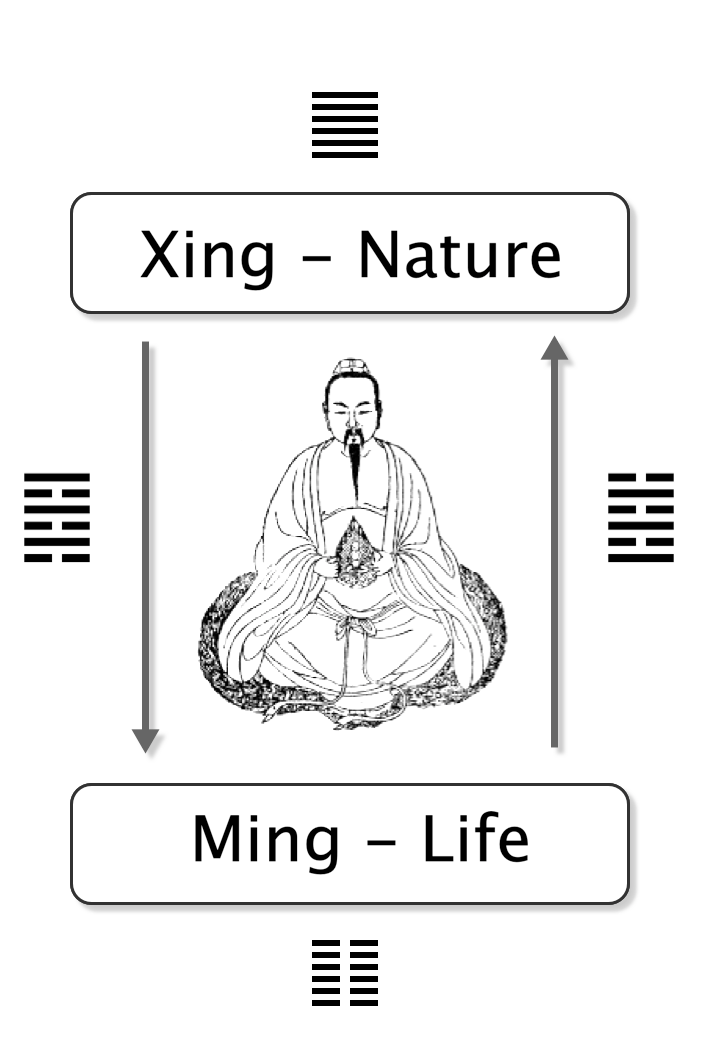
Energetic Anatomy
Jing Luo, Dan Tian and Yin Yang
Channel System
The channel system serves as an extension of the mind, flowing throughout the human body. Comprising 72 key pathways, the Jīng-Luò (經絡) network carries the essence of the mind alongside Qi (氣), Blood (血), and bodily fluids, nourishing the organs, tissues, and extremities.
Chinese medical treatment adjusts these channels to restore balance and enhance well-being. The surface channels can be influenced through physical touch, the deeper channels through acupuncture, and the innermost pathways through Qi emission (Wài Qì Liáo Fǎ 外氣療法).
Each channel is an integral part of the body's Yin-Yang functional system, linking consciousness with organ activity while regulating the flow of Qi, Blood, and fluids. Channels are classified based on location and Yin-Yang correspondence, and it is through direct engagement with them that transformation in health and vitality is achieved.
Yin & Yang Qi
The energy body is governed by the dynamic interplay of two fundamental types of Qi—Yin and Yang. These complementary forces work in harmony to lead, structure, and store the body's vital energy. This Qi is gathered and preserved within several energy reservoirs, known as the "Oceans of Qi" (Dan Tian, 丹田).
The Dan Tian can be developed through Nei Gong (內功) training, allowing practitioners to refine their internal skill and deepen their energetic potential. In traditional healing, these energy centers are also regulated within the patient’s body to support their journey toward health and vitality.
A skilled practitioner of Chinese medicine who understands the "Oceans of Qi" can effectively harmonize Yin and Yang, facilitating profound energetic balance during treatment. Unfortunately, in modern medical practice, many of these subtle yet powerful methods have been lost. Reviving such knowledge would restore a vital dimension of transformation and healing.
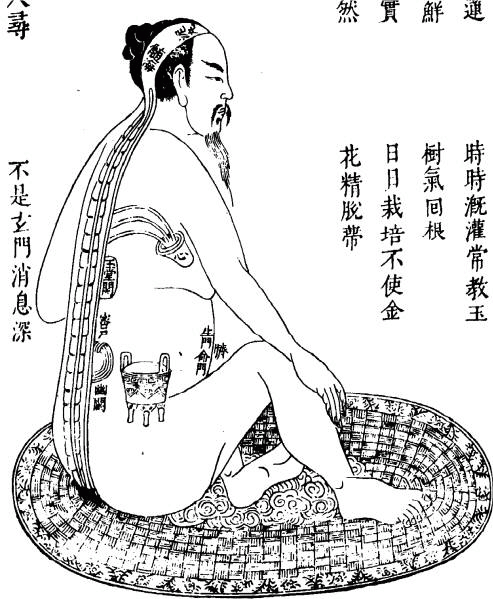
The Body Fires
The source of life is Fire—a fundamental force that sustains the body's warmth, vitality, and movement. If this Fire dwindles, the body cools, stagnates, and falls into disease. If it burns too intensely, the mind becomes agitated, and the Qi and body fluids are depleted. A key role of the Chinese medical practitioner is to ignite, regulate, and maintain this "Fire of Life" at an optimal level.
This original Fire was kindled at the moment consciousness came into existence, manifesting within the body as three primary flames:
-
The "Emperor Fire" of the Heart, which governs spirit and clarity.
-
The "Ministerial Fire", which fuels transformation and function.
-
The "Ming Fire", sourced from original essence (Jing, 精), supporting life’s foundation.
These three fires, along with several lesser flames, interact through the six divisions of Yin and Yang, a core framework of classical medicine. Their balance is mapped onto the body's channels and organ systems, allowing skilled practitioners to stoke, disperse, or harmonize them as needed.
By understanding and governing the body's inner flames, we command the root of vitality itself, ensuring health, balance, and longevity.
Personal Cultivation
A crucial aspect of Chinese Medicine is the practitioner’s personal cultivation. The quality of the practitioner’s mind and the strength of their Qi directly impact the effectiveness of their treatments.
A Daoist practitioner works to refine and strengthen their Dan Tian (Qi reservoir), allowing them to channel their personal Qi during treatments. Whether using Qi emission, physical touch, or acupuncture needles, the practitioner’s internal cultivation enhances the potency of their work, with the level of skill depending on their internal practice.
The Daoist medicine practitioner should be a living example for the patient. Through the quality of their mind, the strength of their vitality, and the subtle influence of their Qi field, the presence of a true practitioner itself should positively impact the patient’s well-being.
It is also important to recognize how the energy exchange between practitioner and patient works, similar to the interaction of two tuning forks. In therapeutic practice, this exchange must be managed carefully, ensuring it benefits the patient while protecting the practitioner from absorbing pathogens or becoming energetically drained.


